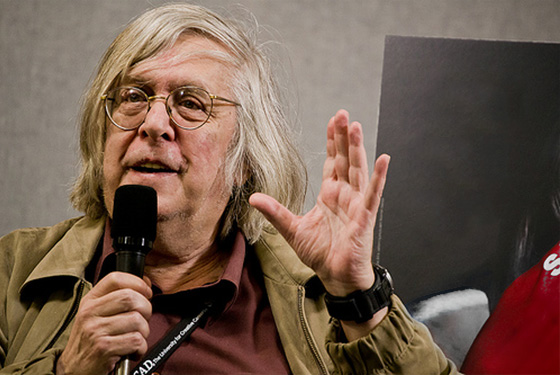From the Chicago Reader (June 1, 2000). — J.R.
“All” is right; Godzilla, Mothra, Rodan, and other apocalyptic Japanese SF monsters converge in this 1968 ‘Scope opus from Toho Studios. Inoshiro (aka Ishiro) Honda directed. 88 min. Read more
This likable comedy-drama from mainland China cogently demonstrates that some of the best old-style Hollywood pictures nowadays are apt to come from almost anywhere except Hollywood. This is a nostalgic look at the last days of a traditional bathhouse before it’s leveled for urban renewal, a movie about community that actually calls to mind something like The Last Picture Show. Zhu Xu (who turned up recently in the title role of The King of Masks) is very effective as the old man who runs the bathhouse, and so are the actors playing the mentally challenged son who lives and works with him and an older son who comes to visit. Writers Liu Fen Dou and Cai Xiang Jun and director Zhang Yang move freely and gracefully between fantasy and reality in this sentimental 2000 film, which never becomes as trite or calculated as you might fear, maybe because mentally challenged characters aren’t the same kind of standbys in Chinese cinema as they are on Oscar night. In Mandarin with subtitles. 92 min. (JR) Read more
This feature-length film (2000) of Margaret Cho’s potent one-woman show recalls the early stand-up films of Richard Pryor 20 years ago. There’s the same confessional fervor and pain-ridden comedy deriving from a restaging of traumas having to do with identity crises and substance abuse. As a 31-year-old Korean-American, former alcoholic, star of a discontinued sitcom, and self-described fag hag, Cho has plenty of issues of her own. But there’s a similar kind of hilariously cathartic autocritique as she examines her efforts to lose weight and become less Asian when her sitcom was in jeopardy, and her priceless impersonations of her mother offer a pungent concentrate of her complex responses to racism. It’s hard to think of many more galvanizing definitions of what it means to be an American than Cho’s volcanic self-assessments. 90 min. (JR) Read more
Written in mid-February 2013 for the publication of the Chinese edition of James Naremore’s Acting in the Cinema, which was originally scheduled for publication in China in 2014. It finally came out much later. This is the second Introduction I’ve written for a Chinese translation of a Naremore book; my previous one was for More Than Night: Film Noir in its Contexts. — J.R.
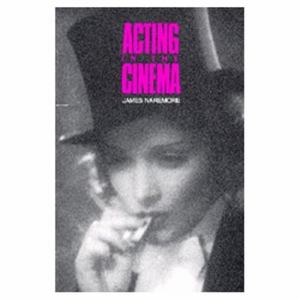
In film criticism, acting tends to be the most neglected single aspect of cinema — one that’s especially difficult to describe and also easy to confuse with other skills and effects in filmmaking, to cite only two of the reasons for its neglect. Often not knowing whose creativity and whose creative decisions are the most relevant, we easily become confounded over issues of intentionality, agency, credit, and defining precisely what it is that we’re responding to, which becomes all the more difficult due to the mythological auras that surround famous actors.The few times that I’ve tried to write about actors myself in any detail, such as Kim Novak, Marilyn Monroe, Eric von Stroheim, and Charlie Chaplin, I’ve concentrated mainly on those auras, and in the case of the latter two, I’ve even found it hard to separate their acting from their writing and directing. Read more
From the Chicago Reader (December 4, 1991). — J.R.
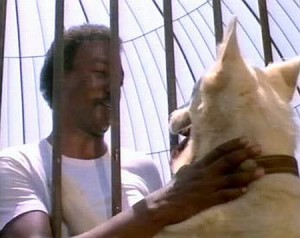

Previously released only in Europe, expatriate Samuel Fuller’s powerful and corrosive masterpiece about American racism — his last work shot in this country — focuses on the efforts of a black animal trainer (Paul Winfield) to deprogram a dog that has been trained to attack blacks. Very loosely adapted by Fuller and Curtis Hanson from a memoir by Romain Gary and set in southern California on the fringes of the film industry, this heartbreakingly pessimistic yet tender story largely concentrates on tragic human fallibility from the vantage point of an animal; in this respect it is like Robert Bresson’s Au hasard Balthazar, and Fuller’s brilliantly eclectic direction gives it a nearly comparable intensity. Through a series of grotesque misunderstandings, this unambiguously antiracist movie was yanked from U.S. distribution nine years ago partly because of charges of racism made by individuals and organizations who had never seen it. But it is one of the key American films of the 80s. With Kristy McNichol, Burl Ives, Jameson Parker, and, in cameo roles, Dick Miller, Paul Bartel, Christa Lang, and Fuller himself (1982). (Music Box, Friday and Saturday, December 6 and 7, midnight)
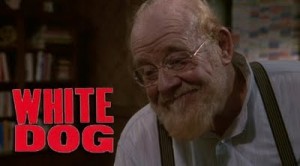 Read more
Read more
From Cinema Scope #20 (Autumn 2004). — J.R.

One of the most flagrant lacks in most jazz films is the spectacle of musicians listening to each another. Back in the early 60s, when I was frequenting a lot of downtown Manhattan jazz clubs, some of my biggest thrills came from visiting spots where many of the best and most attentive listeners were those on the bandstand —- not only the classic John Coltrane Quartet at the now defunct Half Note, where McCoy Tyner, Jimmy Garrison, Elvin Jones, and the serene leader were all meditating on one another’s solos in a kind of trance, but Lennie Tristano at the same club taping his own sets with Warne Marsh and Lee Konitz and then playing them back in the wee hours, while he sat alone at the bar. Sitting a few seats away from him one night, I felt I was getting an education in listening by observing this prodigious blind pianist’s highly physical responses, both positive and negative, to his own solos.

No less precious was the opportunity to attend the Jazz Gallery on St. Mark’s Place one weeknight when Miles Davis, Coltrane, Cannonball Adderley, J.J. Johnson, Bill Evans, Paul Chambers, and Philly Joe Jones were all holding forth in alternation with Teddy Wilson’s trio for (I kid you not) the price of a one-dollar admission, at least for students. Read more
From the Chicago Reader (September 1, 1998). — J.R.
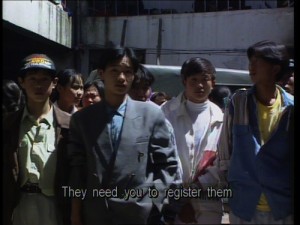
The fascinating thing about this award-winning feature-length documentary (1996) by Duan Jinchuan from mainland China is that it often seems to approximate the work of Frederick Wiseman in showing us the everyday workings of contemporary society — although the society in this case is one we generally know little about. The focus here is on a neighborhood committee in Lhasa, Tibet, where citizens go to settle family disputes, petty thieves and other delinquents are chastised and advised, community finances are computed, and street vendors are regulated, among many other activities. This doesn’t register like a thesis-driven film, though the preparations for an official ceremony celebrating the Chinese occupation of Tibet towards the end certainly has its creepy side, and one that implicitly rhymes with the other forms of patriarchal rule that one has witnessed in most of the preceding segments. (JR) Read more
From the Chicago Reader (July 8, 1995). — J.R.

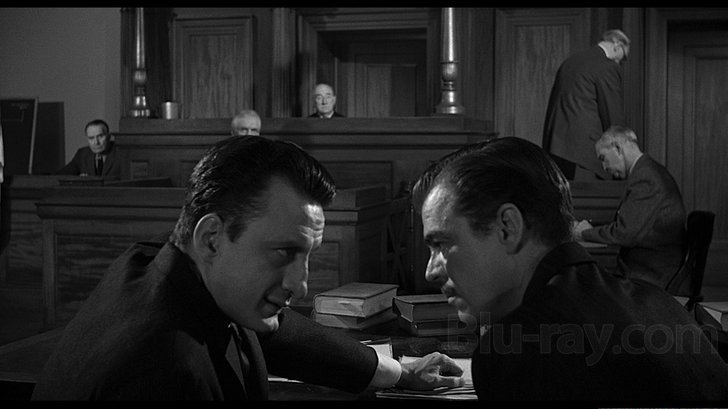
This 1959 release is a prime contender for Otto Preminger’s greatest film — a superb courtroom drama packed with humor and character that shows every actor at his or her best. James Stewart plays a small-town Michigan lawyer asked to defend an army lieutenant (Ben Gazzara) on a charge of murdering a local businessman who allegedly raped his flirtatious wife (Lee Remick); Boston lawyer Joseph Welch (of the army-McCarthy hearings), in his only screen performance, plays the judge; and George C. Scott is a lawyer working for the prosecution. There are also wonderful performances by Arthur O’Connell and Eve Arden, and even a cameo by Duke Ellington, who composed the memorable jazz score. As an entertaining look at legal process, this is spellbinding, infused by an ambiguity about human personality and motivation that is Preminger’s trademark, and the location shooting is superb. Adapted by Wendell Mayes from Robert Travers’s novel. 161 min.

 Read more
Read more
Written for The Unquiet American: Transgressive Comedies from the U.S., a catalogue/ collection put together to accompany a film series at the Austrian Filmmuseum and the Viennale in Autumn 2009. — J.R.

On the Riviera, an American multimillionaire (Gary
Cooper) with many ex-wives meets and romances the
daughter (Claudette Colbert) of a ruined Marquis
(Edward Everett Horton) and proposes marriage;
after she accepts, she learns about his former wives
and refuses to consummate their marriage, baiting
him with a string of pretended infidelities (including
one with a very young David Niven). This is an uncharacteristic
comedy of Ernst Lubitsch by virtue of its relative cruelty
and unpleasantness, both of which seem ascribable in
part to the writing team of Charles Brackett and Billy Wilder
-– who would later show similar traits in their scripts for
such noncomic films as The Lost Weekend (1945) and
Sunset Boulevard (1950) -– adapting here a not-very-
well-known French farce by Alfred Savoir, La huitième
femme de Barbe-Bleue. Paradoxically, 34 years later,
working with I.A.L. Diamond, Wilder would remember certain
aspects of this film -– above all, the depiction of an
obnoxious and wealthy American abroad and a tense
romantic dialogue conducted on a float in the Mediterranean
— in the much sweeter and clearly Lubitsch-inspired
Avanti! Read more
From Film Comment (July-August 1976). In some respects, I think this may be the best of all my many Journals for Film Comment, but for my readers who feel that my work is sometimes (or often) marred or even ruined by my strident tone, it may also be legitimately regarded as my worst. Among other negative consequences, Truffaut read my comments about THE STORY OF ADELE H. and wrote me an angry letter about them (which can be accessed, along with my response to it, on this site), I suspect (without actually knowing) that my passing comment about Pauline Kael may have sabotaged any hopes I’d had about ever becoming friends with her, and my friend (at the time) Gilbert Adair, cited just before the end of this piece, was furious about the over-the-top way I expressed my displeasure with Charles Barr in Movie. For better and for worse, I think this shows my writing at its most intense. -– J.R.
March 25 (London): A KING IN NEW YORK.Even on a Steenbeck, Chaplin’s penultimate feature and last extended performance has such a naked power of embarrassment and assault that one can see right away why so many have recoiled from it. Read more
Written for The Unquiet American: Transgressive Comedies from the U.S., a catalogue/ collection put together to accompany a film series at the Austrian Filmmuseum and the Viennale in Autumn 2009. — J.R.
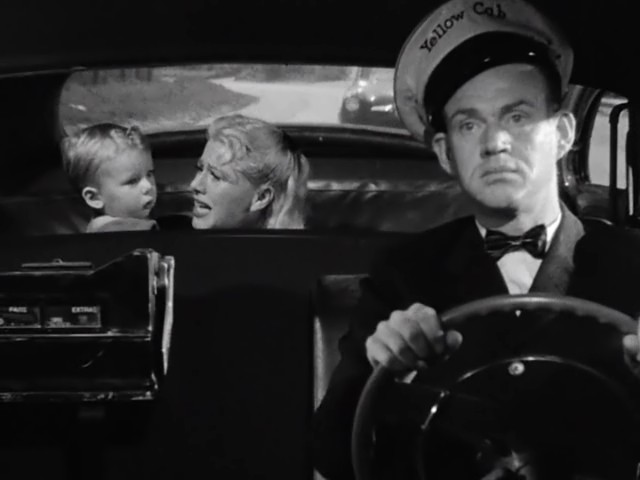
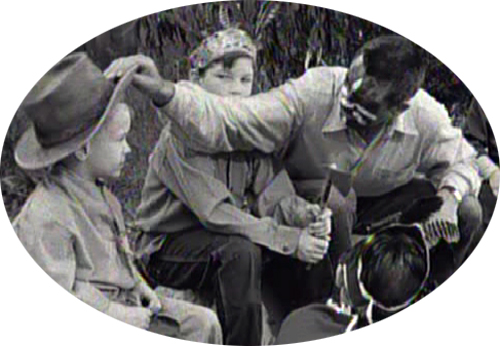
MONKEY BUSINESS (1952)
Although technically a fantasy, this characteristically
grim Howard Hawks comedy about the fear of aging
and the worship of youth is arguably one of his most
honest and realistic, therefore among the most frightening.
A chimpanzee in a chemistry lab manages to
create a youth potion accidentally ingested by the
middle-aged scientist-hero (Cary Grant), who regresses
first to his teens and then, after a second dose, to
his attitudes and behavior in grammar school, which
also happens eventually to his wife (Ginger Rogers)
and boss (Charles Coburn), thereby debunking a
good many myths about youth and happiness (such
as those involving carefree innocence) in the process.
Broadly speaking, this movie does for (and with)
ageism what Gentlemen Prefer Blondes, shot half a
year later (with some of the same cast members, including
Marilyn Monroe, Coburn, and George Winslow),
does for (and with) capitalism, albeit with less
celebratory cynicism and more visible despair. This
doesn’t mean, of course, that it isn’t funny; at least
four Hollywood pros (Ben Hecht, Charles Lederer,
I.A.L. Read more
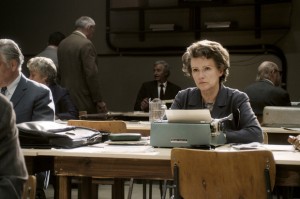
I never expected to see any Margarethe von Trotta movie more than once, but Hannah Arendt proved to be well worth a second look. Some of my reasons for going back are undoubtedly personal; Arendt’s husband, Heinrich Blücher, astutely played in the film by Axel Milberg, is by far the greatest teacher I’ve ever had, two of whose seminars at Bard College I was fortunate to take, and Arendt’s Eichmann in Jerusalem, the main focus of the film, appeared in The New Yorker during the same period. The controversy it sparked among New York intellectuals at the time made it the major topic of discussion among visiting speakers; I can recall lengthy conversations I had or overheard with Harold Rosenberg and Dwight Macdonald, among many others who came to campus during that period. (Lionel Abel, perhaps the most intemperate of Arendt’s foes, also came, but as I recall I went out of my way to avoid broaching the subject with him.) And there were plenty of snack-bar dialogues at Bard with Blücher on the same subject.
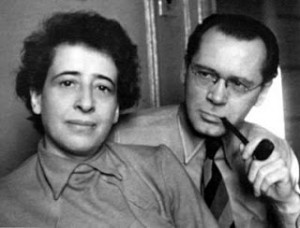

For me, part of the singularity of both Blücher and Arendt (whom I met only briefly, once in their Riverside Drive apartment) was the degree to which art, politics, philosophy, moral seriousness, and a remarkable passion for ethics interfaced in their discourse and lives with an unflagging intensity, and what I cherish most about von Trotta’s movie is the degree to which she — and, above all, Barbara Sukowa as Arendt — capture this. Read more
From the Chicago Reader (September 1, 1992). — J.R.

Lee Myung-sei’s delightful Korean comedy about the trials and tribulations of a young married couple (Park Joong-hoon and Choi Jin-sii, both charming and resourceful actors) offers eloquent testimony to the stylistic importance of Frank Tashlin (The Girl Can’t Help It, Artists and Models, Will Success Spoil Rock Hunter?) as an international legacy. Tashlin’s background as an animator — his graphic talent, his formal ingenuity, his taste for bright primary colors — and his flair for satire of contemporary lifestyles both seem fully present in this lively and inventive feature. It isn’t that Lee has necessarily seen or studied Tashlin’s work, but Tashlin’s bag of tricks has become an automatic part of everyone’s resources, and this comedy fully exploits it (1991). (JR)
 Read more
Read more
From the February 5, 1988 Chicago Reader. — J.R.
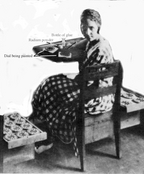
RADIUM CITY
Directed by Carole Langer
Thanks largely to the influence of auteur criticism, most of our aesthetically oriented writing about film since the 60s has been concerned with style. But one could argue that such an emphasis has tended to divert attention from what might be considered even more important — namely, form and content. “Whatever its sophistication,” Roland Barthes wrote in Writing Degree Zero, “style always has something crude about it: it is a form with no clear destination, the product of a thrust, not an intention. . . . Its frame of reference is biological or biographical, not historical . . . it rises up from the writer’s myth-laden depths and unfolds beyond his area of control.”
Perhaps only in an area like Hollywood moviemaking, where the artist seldom has final control over either the form or the content, can style be raised to the level of an ultimate principle. Yet because Hollywood continues to dominate our screens as well as the ways that we think about movies in general, the notion of style is also routinely applied to Bresson, Godard, Kubrick, and Tarkovsky, when surely form and content, not style, is what their best films are about. Read more
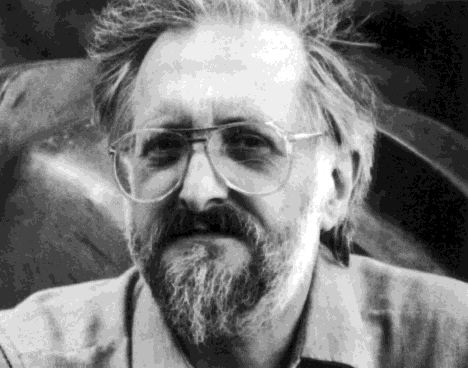
While eagerly awaiting the publication of the aptly named Images of the Mind: The Essential Raymond Durgnat, a definitive collection edited by Henry K. Miller that the British Film Institute will apparently publish later this year, I’ve just found time to experience the pleasure of a remarkable 1992 documentary with half of the same title, Jarmo Valkola’s 45-minute Images of the Mind: Cinematic Visions by Raymond Durgnat — a film now available at newly revamped Durgnat web site that manages to be both a wonderful portrait of the greatest of all English film critics (1932-2002), speaking as both a fan and as a friend over the last three decades of his life (as well as one-time house mate, circa 1977-78), and a brilliant lecture by Ray about the nature of film, the history of the English character in the 20th century, and the art of Michael Powell. Indeed, the only thing that can be said to be dated about this remarkable film is the fact that it cites Durgnat’s still-unpublished book about Powell as one of his publications. Otherwise, it impressively predates the recent film criticism on film that can be found in the work of Kevin Lee and Volker Pantenburg, among many others. Read more
